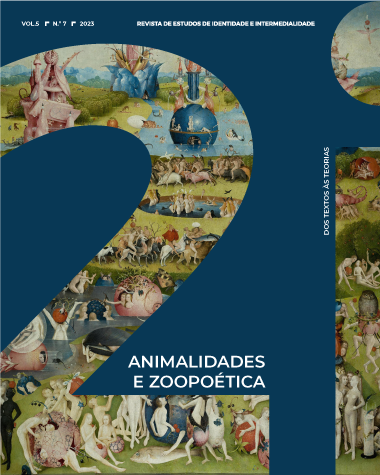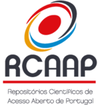The (younger) boy and the world (covered in feathers)
Human-nature relationship and the metaphor of birds in Vidas secas (1938) and o Menino e o mundo (2013)
DOI:
https://doi.org/10.21814/2i.4543Keywords:
intermediality, cinema, metaphor, human-natureAbstract
Published in 1938, Vidas Secas, by Graciliano Ramos, denounces the inequalities of his time, both in the relations between humans and nature and in the relations of humans among themselves. The work catalyses the realities of a Brazil undergoing profound political and social changes. More than seventy years later, the award-winning animated feature film O menino e o mundo (2013), by Alê Abreu, reproduces reflections proposed by Ramos and presents some intersemiotic translations (Plaza, 2003) of the verbal narrative of Vidas Secas into sound and visual signs. Such process shows that the dialogue between the two works goes beyond the explicit thematic similarity and can be perceived in several elements of the animation, from the composition of the characters and the relationship between them to the aesthetic choices, both sound and visual, that allow the animation to expand some of the social criticisms presented by Ramos. As a sign of this dialogue, we will highlight the metaphor of the birds in both works, which has an important symbolic charge for both narratives.
Downloads
References
Abraccine. (2017, dezembro 22). ABRACCINE elege “O Menino e o Mundo” como a melhor animação brasileira. ABRACCINE. https://abraccine.org/2017/12/22/abraccine-elege-o-menino-e-o-mundo-como-a-melhor-animacao-brasileira/
Abreu, A. (Realizador). (2013). O menino e o mundo [Filme de animação]. Brasil: Filme de Papel.
Cândido, A. (2006). Ficção e confissão: ensaios sobre Graciliano Ramos. Rio de Janeiro: Ouro sobre Azul.
Chevalier, J. & Gheerbrant, A. (1997). Dicionário dos Símbolos. Lisboa: Círculo de Leitores.
Derrida, J. (2002). O animal que logo sou (A seguir). São Paulo: Editora UNESP.
Holanda, L. (1992). Sob o signo do silêncio: Vidas secas e O Estrangeiro. São Paulo: Editora da Universidade de São Paulo.
Hutcheon, L. (2006). A Theory of Adaptation. Londres: Routledge. DOI: https://doi.org/10.4324/9780203957721
La Mettrie, J. O. (1982). O homem-máquina.. Lisboa: Editoral Estampa.
Lara, B. B. & Precioso, A. L. (2019). O percurso dos heróis em Vidas secas, de Graciliano Ramos, e O menino e o mundo, de Alê Abreu: prenúncio e confirmação da crise civilizatória. Revista Investigações, 32(1), 125-154. https://doi.org/10.51359/2175-294X.2019.240561 DOI: https://doi.org/10.51359/2175-294x.2019.240561
Lins, Á. (1995). Posfácio. Vidas Secas. Rio de Janeiro: Record.
Mancini, R. (2017). A crise como ponto de partida e chegada na animação O Menino e o Mundo. As crises na/da contemporaneidade: análises discursivas (pp. 145–159). Franca: Unifran – Universidade de Franca.
Moraes, D. (2012). O velho Graça: uma biografia de Graciliano Ramos. São Paulo: Boitempo Editorial.
Plaza, J. (2003). Tradução intersemiótica. São Paulo: Editora Perspectiva.
Queiroz, C. (2019). Intimidade Sertaneja. Pesquisa FAPESP, 282. https://revistapesquisa.fapesp.br/intimidade-sertaneja/.
Rabello, R. B. (2015) Vidas Secas e aspectos da reificação. Revista Entrelaces, 6, 182-193. http://www.repositorio.ufc.br/handle/riufc/23404.
Ramos, G. (1995). Vidas Secas. Rio de Janeiro: Record.
Downloads
Published
How to Cite
Issue
Section
License
Copyright (c) 2023 Taynnã de Camargo Santos

This work is licensed under a Creative Commons Attribution-NonCommercial 4.0 International License.


.jpg)










